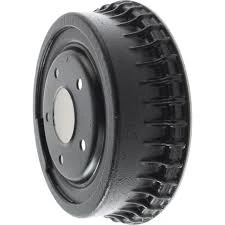
-
 Afrikaans
Afrikaans -
 Albanian
Albanian -
 Amharic
Amharic -
 Arabic
Arabic -
 Armenian
Armenian -
 Azerbaijani
Azerbaijani -
 Basque
Basque -
 Belarusian
Belarusian -
 Bengali
Bengali -
 Bosnian
Bosnian -
 Bulgarian
Bulgarian -
 Catalan
Catalan -
 Cebuano
Cebuano -
 Corsican
Corsican -
 Croatian
Croatian -
 Czech
Czech -
 Danish
Danish -
 Dutch
Dutch -
 English
English -
 Esperanto
Esperanto -
 Estonian
Estonian -
 Finnish
Finnish -
 French
French -
 Frisian
Frisian -
 Galician
Galician -
 Georgian
Georgian -
 German
German -
 Greek
Greek -
 Gujarati
Gujarati -
 Haitian Creole
Haitian Creole -
 hausa
hausa -
 hawaiian
hawaiian -
 Hebrew
Hebrew -
 Hindi
Hindi -
 Miao
Miao -
 Hungarian
Hungarian -
 Icelandic
Icelandic -
 igbo
igbo -
 Indonesian
Indonesian -
 irish
irish -
 Italian
Italian -
 Japanese
Japanese -
 Javanese
Javanese -
 Kannada
Kannada -
 kazakh
kazakh -
 Khmer
Khmer -
 Rwandese
Rwandese -
 Korean
Korean -
 Kurdish
Kurdish -
 Kyrgyz
Kyrgyz -
 Lao
Lao -
 Latin
Latin -
 Latvian
Latvian -
 Lithuanian
Lithuanian -
 Luxembourgish
Luxembourgish -
 Macedonian
Macedonian -
 Malgashi
Malgashi -
 Malay
Malay -
 Malayalam
Malayalam -
 Maltese
Maltese -
 Maori
Maori -
 Marathi
Marathi -
 Mongolian
Mongolian -
 Myanmar
Myanmar -
 Nepali
Nepali -
 Norwegian
Norwegian -
 Norwegian
Norwegian -
 Occitan
Occitan -
 Pashto
Pashto -
 Persian
Persian -
 Polish
Polish -
 Portuguese
Portuguese -
 Punjabi
Punjabi -
 Romanian
Romanian -
 Russian
Russian -
 Samoan
Samoan -
 Scottish Gaelic
Scottish Gaelic -
 Serbian
Serbian -
 Sesotho
Sesotho -
 Shona
Shona -
 Sindhi
Sindhi -
 Sinhala
Sinhala -
 Slovak
Slovak -
 Slovenian
Slovenian -
 Somali
Somali -
 Spanish
Spanish -
 Sundanese
Sundanese -
 Swahili
Swahili -
 Swedish
Swedish -
 Tagalog
Tagalog -
 Tajik
Tajik -
 Tamil
Tamil -
 Tatar
Tatar -
 Telugu
Telugu -
 Thai
Thai -
 Turkish
Turkish -
 Turkmen
Turkmen -
 Ukrainian
Ukrainian -
 Urdu
Urdu -
 Uighur
Uighur -
 Uzbek
Uzbek -
 Vietnamese
Vietnamese -
 Welsh
Welsh -
 Bantu
Bantu -
 Yiddish
Yiddish -
 Yoruba
Yoruba -
 Zulu
Zulu
An Overview of Disc and Drum Brake System Technologies and Their Applications
Understanding Disc and Drum Brake Systems A Comparative Overview
Braking systems are among the most crucial components of any vehicle, ensuring safety and control during operation. The two primary types of braking systems used in modern vehicles are disc brakes and drum brakes. Each system has its own unique characteristics, advantages, and disadvantages, making them suitable for different applications. This article explores the fundamental differences between disc and drum brake systems, including their construction, performance, and maintenance requirements.
Construction and Design
Disc brakes consist of a flat, circular metal disc attached to the wheel hub. When the brake pedal is pressed, hydraulic force pushes brake pads against the disc, creating friction that slows down or stops the vehicle. The basic components of a disc brake include the brake rotor (the disc), brake calipers, and brake pads.
In contrast, drum brakes feature a hollow drum that rotates with the wheel. Inside the drum are brake shoes, which expand outward when the brakes are applied, pressing against the inner surface of the drum to create friction. Drum brakes typically have a more complex design that includes additional components such as return springs and self-adjusting mechanisms.
Performance
When it comes to performance, disc brakes typically outperform drum brakes, especially in high-demand situations. Disc brakes excel in heat dissipation, as the exposed nature of the rotor allows for better cooling, reducing the risk of brake fade. Brake fade occurs when brakes overheat, leading to a decrease in stopping power. This is particularly relevant during aggressive driving, frequent stops, or when carrying heavy loads.
disc and drum brake systems

On the other hand, drum brakes can generate more friction and, therefore, more stopping force under certain conditions, which is why they are often used in the rear wheels of many vehicles, particularly trucks and buses. However, their performance may degrade more quickly under repeated heavy braking due to heat buildup.
Advantages and Disadvantages
Each braking system has inherent advantages and disadvantages. Disc brakes, for instance, tend to be more responsive and provide better performance in wet conditions, as water and debris can easily be swept away from the rotor by the brake pads. They also require less maintenance in terms of adjustment, as the caliper design allows for self-adjustment of the brake pads.
Nevertheless, disc brakes can be more expensive to manufacture and install, which is why they are often found in higher-end or performance vehicles. They also tend to be heavier than drum systems, which can affect overall vehicle weight and efficiency.
Drum brakes, conversely, are generally less expensive and can offer more efficient parking brake functionality due to their design. They also tend to be more compact, making them suitable for applications where space is limited. However, they require more frequent maintenance and adjustment, particularly in terms of brake shoe wear, and are more susceptible to moisture-related issues.
Conclusion
In summary, both disc and drum brake systems play vital roles in vehicle safety and performance. While disc brakes offer superior stopping power and heat dissipation, drum brakes present a cost-effective solution for certain applications. Understanding the strengths and weaknesses of each system can help vehicle owners and manufacturers make informed decisions about brake system design and maintenance, ultimately enhancing both safety and driving experience. As automotive technology continues to evolve, the choice between disc and drum brakes will remain an important consideration for engineers, designers, and consumers alike.
-
What Are Drum BrakesNewsJul.07,2025
-
Understanding Brake Drum MaterialNewsJul.07,2025
-
Semi-Trailer Brake Drum: A Key Component for Extreme Loads and Long-Distance TransportNewsJul.07,2025
-
Drum Brake Pads for SaleNewsJul.07,2025
-
Brake Drums for SaleNewsJul.07,2025
-
Brake Drum ManufacturerNewsJul.07,2025
-
Aluminum Brake Drums: The Future of High-Performance CarsNewsJul.07,2025
